How Much Does Medical School Cost in 2025?


Students who decide to attend medical school to become doctors have to assess multiple factors, but one of the most significant factors is how much medical school costs.
Medical school tuition in the United States is known for being extremely expensive, and having to pay for medical school on top of accrued undergraduate school costs may make students feel that it's impossible to pay for their education. However, there are many scholarship opportunities to help students lessen the financial burden of attending medical school.
In the piece, I'll explain medical school costs, from tuition fees to books and supplies. I'll also discuss ways to pay for medical school including scholarships and grants.
Create a Bold.org profile and use the scholarship search feature to access hundreds of exclusive scholarships!
Get Matched to Thousands of Scholarships
Create your Bold.org profile to access thousands of exclusive scholarships, available only on Bold.org.
Create Free ProfileAverage Cost vs. Average Cost of Attendance
In this article, I'll be using two different statistics: the average cost of medical school and the average cost of attendance. To put it simply, the average cost of attendance is just the average cost plus living expenses.
- Average Cost = tuition, fees, and health insurance
- Average Cost of Attendance = tuition, fees, health insurance, room and board, textbooks and supplies

I've decided to analyze both numbers because living expenses are extremely variable across regions. Therefore, the average cost of attendance may be misleading. It is much better to consider the base cost of tuition, fees, and health insurance before trying to understand what your living expenses may be.
Want a more general breakdown of the cost of college? Check out this blog, which details the various components of attending college, including semester and yearly numbers.
Average Cost of Medical School
According to statistics from the Association of American Medical Colleges (AAMC), the average cost of medical school in the United States is $58,968 per year.
This includes tuition, fees, and health insurance and is averaged across public/private schools and in/out-of-state status. Below is a table displaying the differences in medical school cost by type and residency status (AAMC).
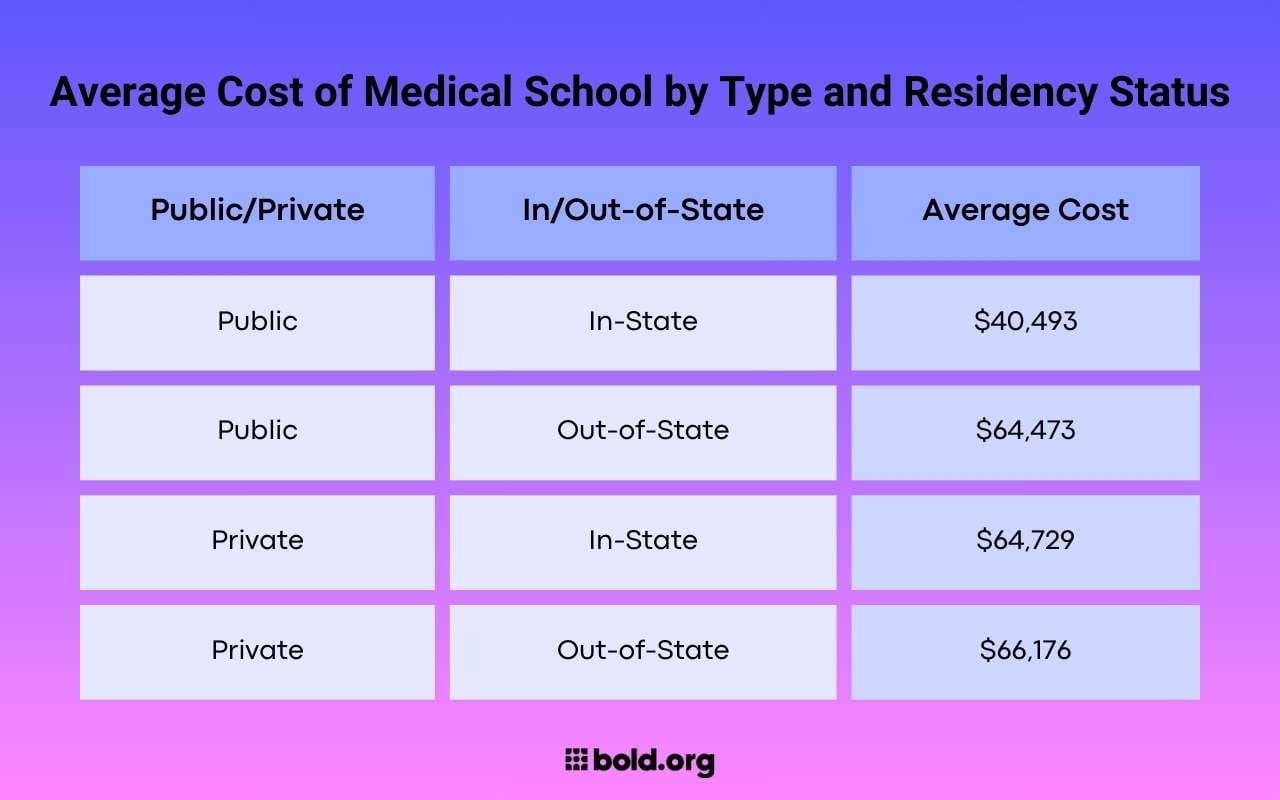
The average private medical school will usually cost more than a public school, even when considering out-of-state students. Keep this in mind when considering the costs of attending medical school.
Average Cost of Attendance for Medical School
As mentioned above, this average cost includes tuition, fees, and health insurance. While these make up the bulk of what the average student will pay during their first year of medical school, it's also important to consider other living expenses, which can be a significant financial burden, especially for medical schools in expensive cities.
If we consider all living expenses, according to the AAMC, the average cost of attendance for attending medical school in the United States is $68,924.
Room and Board
The cost of lodging and food per year varies greatly, but medical students should expect room and board to cost between $10,000 and $30,000 per year. Out-of-state students should expect their living expenses to veer towards the $30,000 end, while in-state students tend to enjoy lower costs.
Textbooks and Supplies
Medical students endure some of the most rigorous courses in higher education, and as a result, textbook costs can pile up. You should expect the cost of textbooks and other academic supplies to range from $1,000 to $2,000. However, nowadays, it is much easier to secure secondhand or digital textbooks, which may be much cheaper than their hardcover counterparts.
Pay for your graduate school textbooks with these exclusive scholarships tailored toward paying for textbooks!
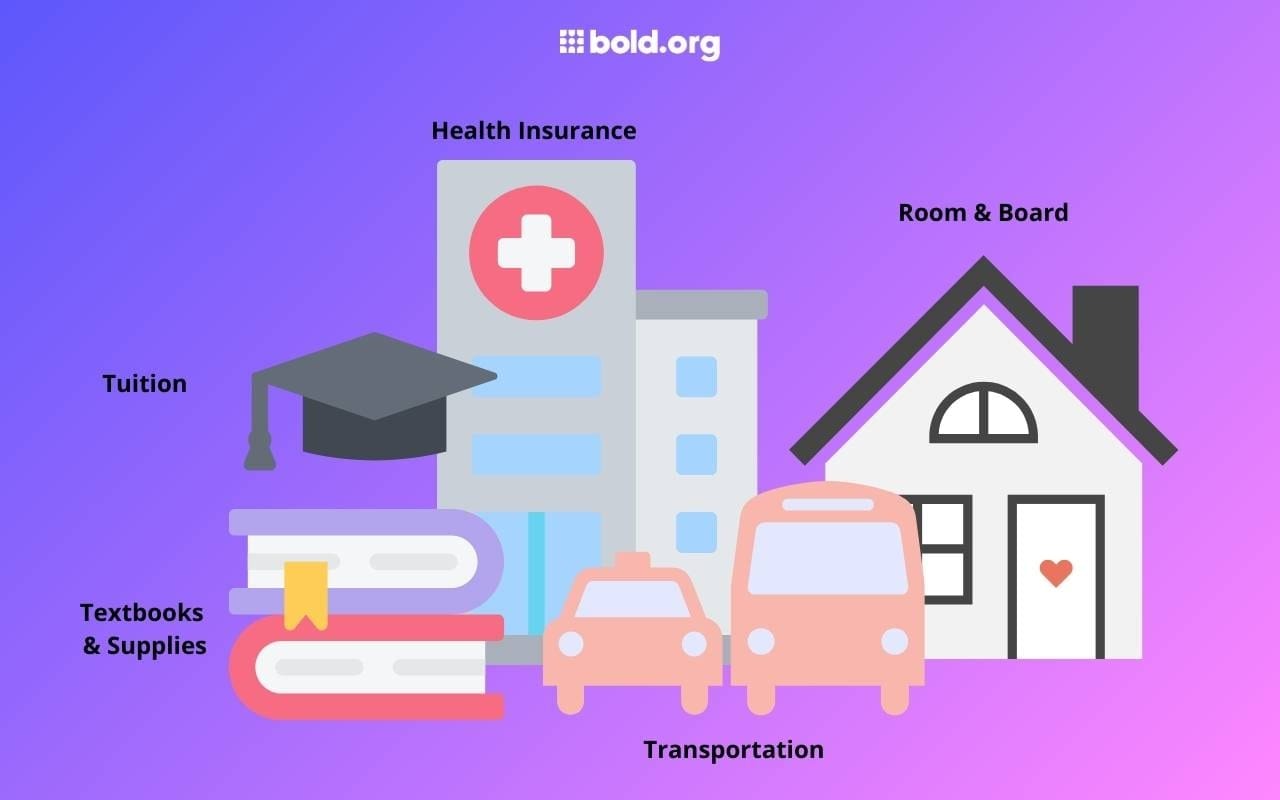
Costs of Applying to Medical School
To add to the financial burden, prospective medical students will need to spend money on application fees and other expenses. The cost of applying to medical school, therefore, ends up costing $5,000 to $15,000.
"An applicant to 15 medical schools can easily spend over $10,000 in the application process." - Dr. McGreggor Crowley, a medical school admissions counselor
Let's break these costs down.
Create Your Free Profile to Apply for Scholarships Today!Primary Application Fee
Many medical schools use the AAMC's American Medical Colleges Application Service (AMCAS) for the application process. In 2025, the application fee was $175 for the first school and $46 for every school after that. Expect these numbers to increase by about $1 to $2 each year.
Secondary Application Fee
After the AMCAS, many schools require a secondary application with further materials that cost a secondary application fee. And there are additional college service fees when it comes to transmitting your transcripts and letters of recommendation. These costs vary greatly between schools.
MCAT Registration Fee
Furthermore, the medical school application process requires you to take the Medical College Admission Test (MCAT) exam. The registration fee for the MCAT is $335, which includes both taking the exam and sending your scores to schools.
Other Expenses
- travel, overnight accommodations, and proper attire for medical school interviews
- buying application tools and books to help you with the application process
- buying study tools and practice materials for the MCAT exam
Example Medical Student Applicant
Below is a chart breaking down the total application expenses of Pierre Curran, averaging $500 per interview. He applied to 21 different schools before enrolling in Penn State's medical school.
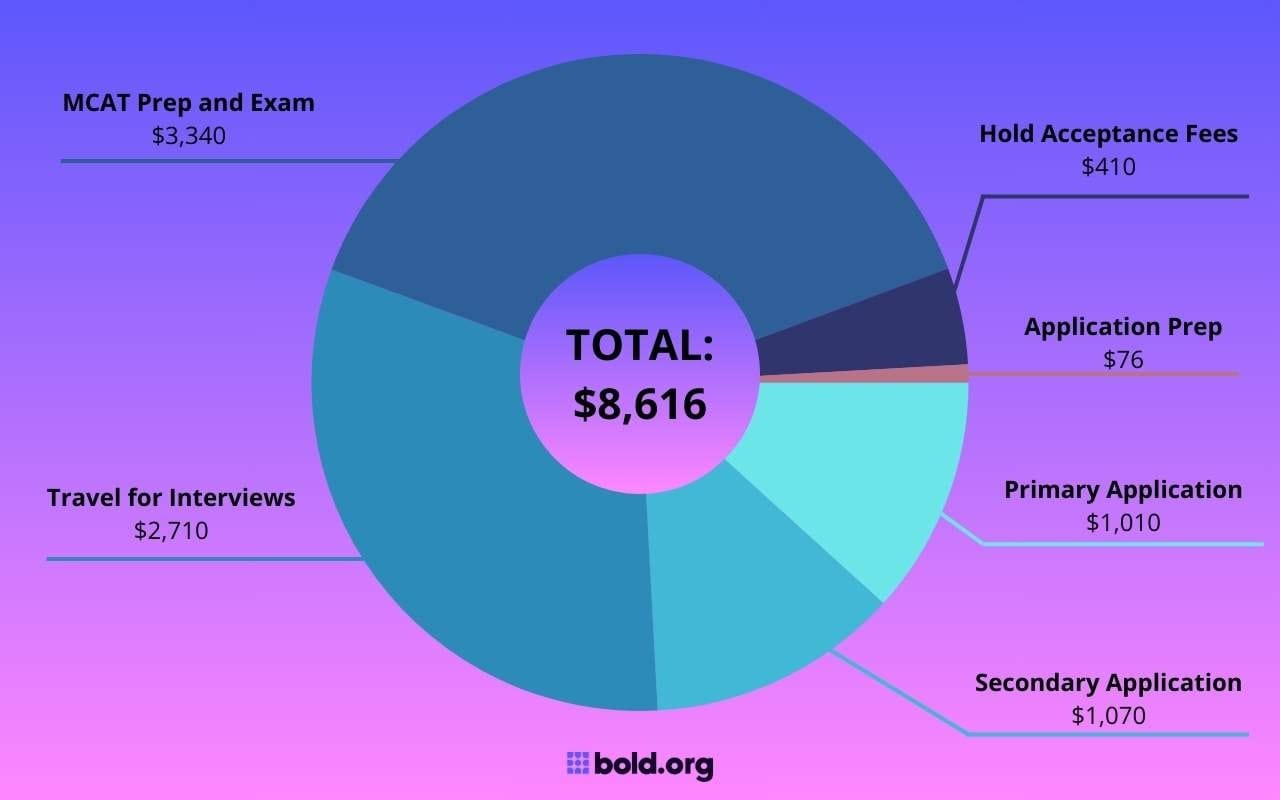
Apply for some graduate student scholarships to start reducing your college costs today!
List of Tuition Fees at Top Medical Schools
To give you an idea of the money it takes to attend a top medical school, here is a list of some of the best medical schools and their corresponding tuition fees and cost of attendance.
Keep in mind that because these are the top schools in the country, their costs will be significantly higher than the average. However, some schools, like the Texas Southwestern Medical School, a Tier 1 Medical Research University, may offer comparatively low tuition rates for top-quality education.
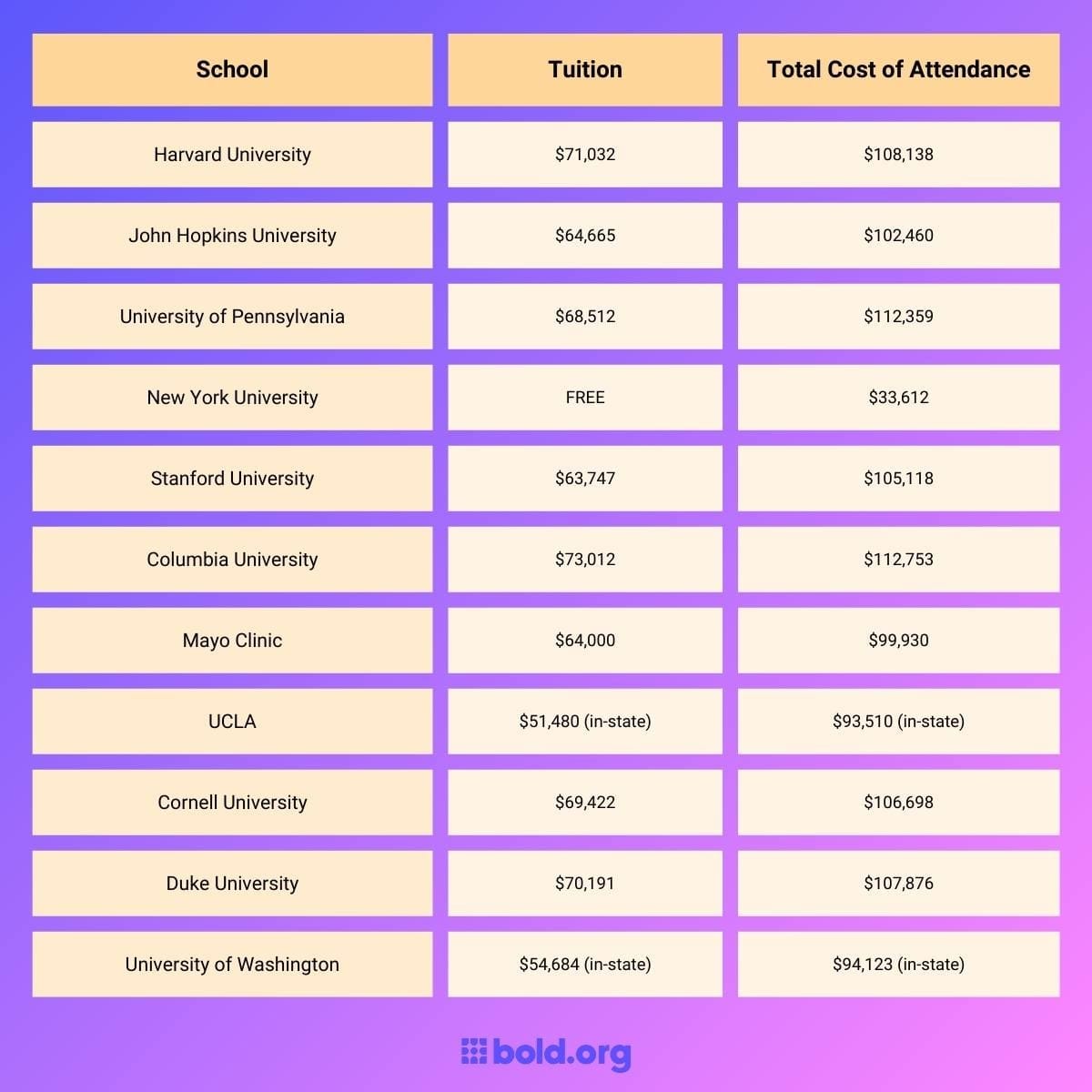
How to Pay for Medical School
Fill Out the FAFSA
The first step of paying for medical school is to make sure you fill out the Free Application for Federal Student Aid (FAFSA) every year you're in medical school to qualify for grants and scholarships from the government and your school and for federal loans and private loans.
Even if you think you may not qualify for need-based aid, many schools require the FAFSA to be considered for their own financial aid programs. Submitting your FAFSA early can also increase your chances of receiving aid, as some funds are awarded on a first-come, first-served basis.
Scholarships and Grants for Medical School
Scholarships and grants can be given out by the government or your school. Browse government websites for information on scholarships provided there, and contact your school's financial aid office to find out what opportunities are available to you. Here are a few types to consider:
- Federal Scholarships and Grants: The U.S. government offers several scholarship and grant programs for medical students, such as the National Health Service Corps (NHSC) Scholarship Program, which covers tuition and fees and provides a living stipend in exchange for a service commitment in an underserved area after graduation.
- Institutional Scholarships and Grants: Many medical schools offer their own scholarships based on merit, need, or specific criteria such as community service or leadership. Contact your school's financial aid office to learn about the scholarships that are available to you.Furthermore, some schools, like the Oregon Oregon Health and Science University School of Medicine, offer a "Tuition Promise" wherein their tuition rates will not increase over the remaining years of the student's degree. This can also reduce costs incurred by inflation in the economy.
- Private Scholarships and Grants: Numerous organizations offer scholarships for medical students, such as those found on platforms like Bold.org. Some are based on academic achievement, while others may focus on specific demographics, career goals, or areas of interest. Applying to multiple scholarships can increase your chances of receiving aid.
- Service-Based Scholarships: Programs like the Health Professions Scholarship Program (HPSP) provided by the U.S. Army, Navy, and Air Force cover the full cost of medical school in exchange for military service after graduation.
Don't miss out on these exclusive scholarships for medical students, tailored towards students trying to fulfill their dreams of saving lives in the medical field!
Student Loans
While scholarships and grants are ideal, they may not cover the full cost of medical school, which often exceeds $200,000. In such cases, student loans can bridge the gap. Here’s a breakdown of your loan options:
- Federal Student Loans: Federal loans, such as Direct Unsubsidized Loans and Grad PLUS Loans, are available for students to attend medical school. These loans offer fixed interest rates, income-driven repayment plans, and the possibility of loan forgiveness.
- Private Student Loans: Private loans from banks or credit unions can also help cover medical school costs. However, these loans typically come with higher interest rates and less flexible repayment options compared to federal loans.
- Loan Repayment Assistance Programs (LRAPs): Some organizations and states offer loan repayment assistance to medical graduates who work in underserved areas or in specific fields like primary care. These programs can significantly reduce your debt burden.
Work-Study and Part-Time Employment
Although medical school is demanding, some students manage part-time work or participate in work-study programs to earn money while studying. Work-study positions are often related to healthcare and can provide valuable experience. However, it’s important to balance work with your academic responsibilities to avoid burnout.
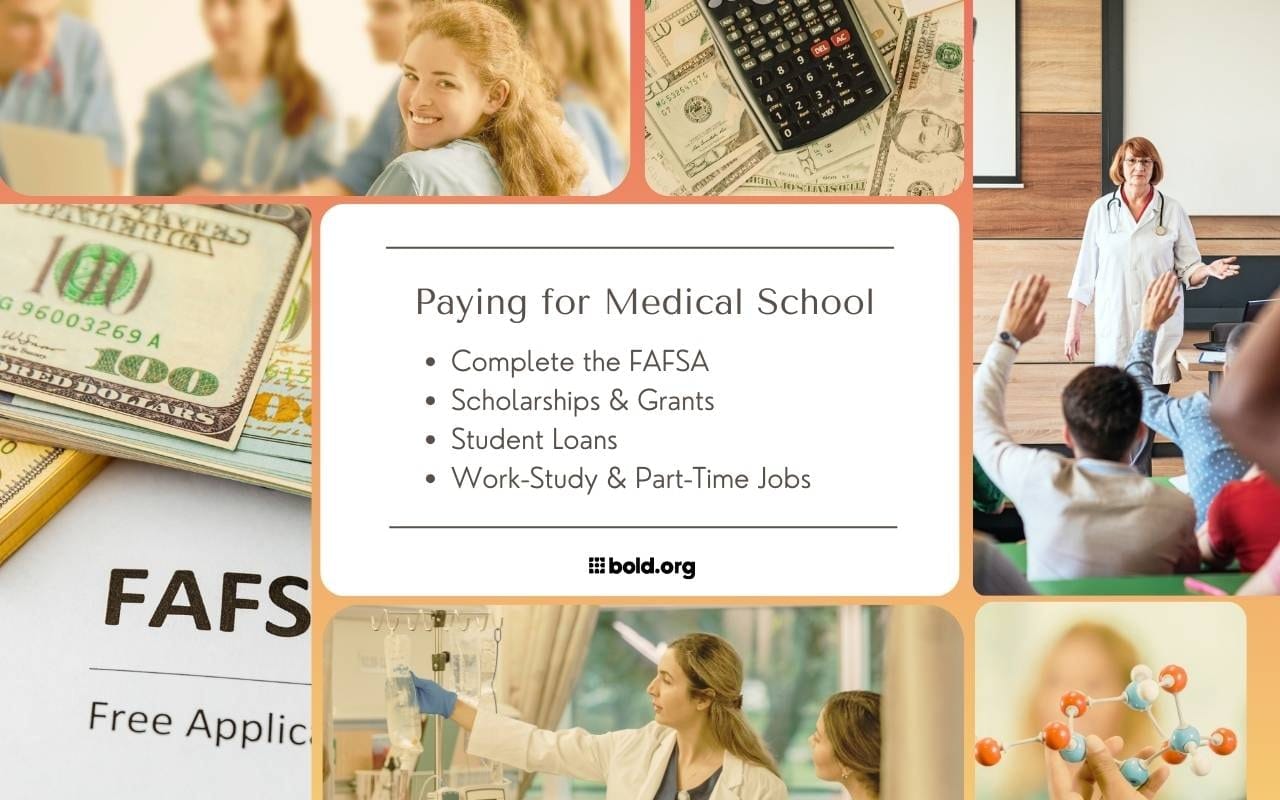
Frequently Asked Questions About How Much Medical School Costs
What is the cheapest medical school?
The cheapest among public medical schools in the United States for out-of-state students is the University of Texas Health Science Center, with an out-of-state tuition of $26,125.
The cheapest public medical school in the United States for in-state tuition is the Texas Medical Branch School of Medicine, with an in-state tuition of $10,713.
The cheapest among private medical schools is New York University Grossman School of Medicine, which offers full-ride scholarships to all of its MD students. Another private school that offers free tuition is the Albert Einstein College of Medicine, which takes effect in Fall 2024.
How much does a doctor make in a year?
A doctor's annual salary can vary widely depending on their specialty, location, and experience, with average earnings ranging from $181,121 to $244,989. Specialists like surgeons and anesthesiologists typically earn more than primary care physicians. Factors such as working in urban vs. rural areas and years of practice also influence income.
Do you get paid in medical school?
Medical school students do not receive payment for attending school, clinical rotations, or clerkships. However, some may choose to work part-time jobs outside of their studies. Financial aid, scholarships, and loans are typically used to cover living expenses during medical school.
For more information about colleges, finances, and ways to pay for costly higher education, check out our scholarship blog!